Perusing the Car Configurator on Porsche’s Web site is daunting. Options abound, and prices get wacky in a hurry. Sure, you can get in the game for just under $50k, but the top end of the range demands about $150,000 from your savings. Your first instinct is to get more power—because, after all, that’s the testosterone-fueled thing to do, right? Yet just how much performance does an entry-level car possess? Can you still get the Porsche experience with the base Boxster?
It all reminds me of the time I sat across the table from race-car driver Hurley Haywood and discussed the perfect Porsche for everyday use. He looked me straight in the eye and said, “There are probably eight people in the world that can drive a Porsche 911 to 100% of its capability and you’re looking at one of them.” It’s hard to argue with the man that won the prestigious 24 hours of LeMans for Porsche three times, and secured more endurance racing titles than just about anyone else. “Just get the Boxster. It will do everything you need it to do, with no sacrifices in performance in day to day driving.”
A similar case can be made for the AVID Diva II and Diva II SP turntables. If the company’s $20,000 Acutus Reference SP isn’t in the budget, think of its entry-level ‘tables as the equivalent of a Boxster and Boxster S, incorporating priorities that make the top-end ‘tables fantastic—just in a slightly smaller, more compact packages. Both models embrace a healthy amount of Acutus Reference DNA at a fraction of the cost. The $1,995 Diva II is bettered by the $3,995 Diva II SP, which offers increases in sonic performance concurrent with the price, though each look relatively similar to the naked eye.
 Techie Bits
Techie Bits
Where some manufacturers begin their product line at the bottom, deriving higher performance by refining initial offerings, AVID takes the opposite approach by utilizing the Acutus as a starting point. Designer Conrad Mas builds as many aspects of the Acutus into other ‘tables as economically possible. All models are centered around a W–shaped sub-platter design, which provides high structural rigidity without extremely high mass. The sub platter is cast with variable density aluminum that acts as a conduit to drain vibration energy away from the tonearm mount and main bearing. The results? A turntable line with a signature sound free of resonance-induced coloration. Resolution and dynamics improve as you move up the range.

AVID’s top ‘tables utilize precisely wound coils for suspension. Yet the Diva versions use elastomers, made from an extremely high-grade Sorbothane that, according to Mas, does not degrade. The Diva II shares the same sub chassis and motor with the SP model, incorporating a DSP-controlled power supply and two-belt drive system. Many belt-drive turntables use a low-torque motor to spin the platter, yet AVID takes an uncommon approach via a high-torque motor, yielding low wow and flutter and great speed accuracy. Both ‘tables measure 33.3RPM out of the box. The Diva II is the only AVID model that does not require a motor swap when upgrading to the SP version.
The platter is the most visible difference between the models. While a cork mat covers each, the Diva II uses a less-expensive composite MDF platter than the massive, machined aluminum edition on the SP. Both ‘tables arrive with the sub chassis pre-drilled for an SME arm.
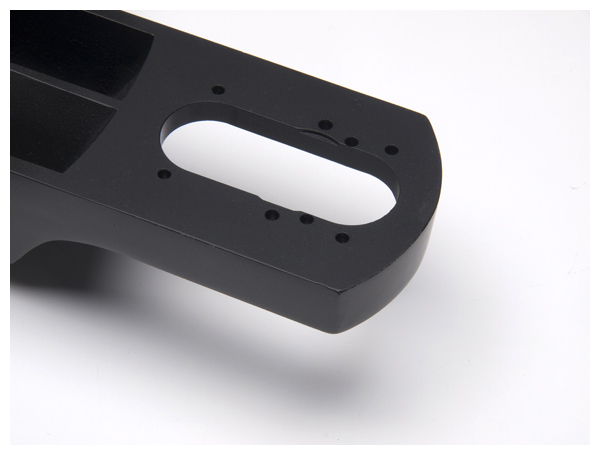 However, most popular arms (Rega, TriPlanar, Dynavector, and others) can be accommodated with an adaptor plate available from AVID dealers. Comparison listening between the Diva II and II SP came courtesy of identical SME 309 tonearms, each fitted with Dynavector DV20x2L phono cartridges and Furutech ag12 tonearm cables. Feickert Analogue’s Adjust + software assured identical performance from both setups.
However, most popular arms (Rega, TriPlanar, Dynavector, and others) can be accommodated with an adaptor plate available from AVID dealers. Comparison listening between the Diva II and II SP came courtesy of identical SME 309 tonearms, each fitted with Dynavector DV20x2L phono cartridges and Furutech ag12 tonearm cables. Feickert Analogue’s Adjust + software assured identical performance from both setups.
With direct comparisons complete, further listening with the Rega RB1000, TriPlanar Vii, and the Funk Firm FX•RII yields excellent results, proving these ‘tables mate easily with the tonearm of your choice. A particularly synergistic albeit decidedly old-school match is achieved with a rebuilt SME 3009 and Ortofon SPU cartridge. The Audio Research REF Phono 2 boasts more than enough resolution to hear the differences between the two ‘tables.
Regardless of the arm, both models can be optimized in less than 15 minutes. Operation is smooth and simple, taking advantage of a machined aluminum clamp to tightly hold the record to the cork platter mats. The large motor also provides quick startup and enough torque to effortlessly work with foam-pad record brushes.
While I’m a longtime fan of SME tonearms, I suggest the Funk Firm for audiophiles more monogamous with cartridge choices. The FX•RII/Diva II SP combination produces some of the most lifelike sound I’ve experienced in the $6,000 range. The addition of a $379 Denon DL-103R equates to a well-rounded package that capably handles all types of music. The SME 309, or another tonearm featuring a removable headshell, will better serve listeners juggling multiple cartridges as well as those that enjoy changing cartridges. (Read my review here for more info on the Funk arm.)
Compare/Contrast
The Diva II and SP share a neutral tonal balance and low mechanical noise prevalent in the Acutus. Theirs is a lively sound, possessing a weighty bottom end that never comes across as overdamped. Listening to acoustic music reveals bass notes possess enough warmth, resonance, and overhang to sound convincing. The opening bass line from “Tea in the Sahara” from the Police’s Synchronicity maintains Sting’s trademark smoothness—and the necessary acceleration to capture the mood. Both ‘tables have a similar weightiness (the SP wins out, however), and the SP is more expressive due to the presence of additional tonal shading.
The two models are most similar throughout the midrange. Should your musical tastes range towards smaller-scale music, you may be hard-pressed to distinguish any differences. Listening to Beethoven’s String Quartet No. 12 in E-flat Major, which lacks huge dynamic swings and major bass excursion, makes it almost impossible to distinguish the Diva II from the Diva II SP. Only when switching to full-scale orchestral music, or Rammstein, does the extra dynamic range become readily apparent.
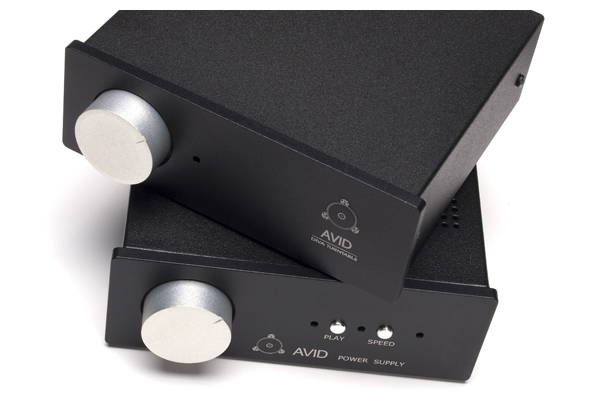 Speaking of Rammstein, both ‘tables are highly resistant to acoustic feedback when blasting “Ich tu dir weh” at high-volume levels. Yes, the AVID decks will satisfy hard-core metalheads in addition to everyone else, regardless of musical taste. This is not a feat aced by all turntables.
Speaking of Rammstein, both ‘tables are highly resistant to acoustic feedback when blasting “Ich tu dir weh” at high-volume levels. Yes, the AVID decks will satisfy hard-core metalheads in addition to everyone else, regardless of musical taste. This is not a feat aced by all turntables.
The II SP comes into its own with more complex music by furnishing more detail in all three dimensions. Santana’s self-titled debut showcases pinpoint imaging, with drums and percussion retaining distinct places within the studio-created soundfield. The Diva II does an excellent job decoding spatial cues and placement, and finite characteristics remain closely within the speaker boundaries. The II SP brings Santana’s guitar playing out in front of the imaginary boundary between the speakers, and the smallest percussion bits are more distinct and focused.
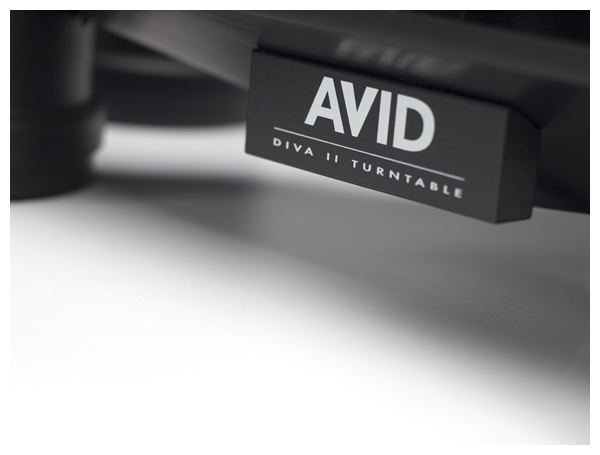 While both ‘tables admirably function with some of my best recordings, the II SP’s higher resolution uncovers more treasure on mediocre, densely packed recordings. The II SP also offers a bigger performance gain when paired with a premium arm and cartridge. The gap isn’t as vast with a Rega RB 300 arm as it is with the SME 309 or Funk Firm FX•R arm. I concur with Mr. Mas, who feels like the ‘table and arm are critical to an analog playback system, and that one can achieve better overall performance with a great turntable/arm setup and modest cartridge than the other way around.
While both ‘tables admirably function with some of my best recordings, the II SP’s higher resolution uncovers more treasure on mediocre, densely packed recordings. The II SP also offers a bigger performance gain when paired with a premium arm and cartridge. The gap isn’t as vast with a Rega RB 300 arm as it is with the SME 309 or Funk Firm FX•R arm. I concur with Mr. Mas, who feels like the ‘table and arm are critical to an analog playback system, and that one can achieve better overall performance with a great turntable/arm setup and modest cartridge than the other way around.
The more time I spend concurrently listening to both ‘tables leads me to love the Diva II SP the most. However, in all fairness to the standard Diva II, the difference between the two represents a linear progression. You don’t get 85% the performance of the Diva II SP for half the price in the Diva II. A brief comparison with the $5,500 Volvere SP confirmed the same conclusion; the Volvere experiences a similar increase in performance when put head-to-head with the II SP.
Both decks are excellent. If I were writing the check (and I purchased a Diva II SP half-way through this review), I’d pair the Diva II with something like the Rega RB 250/300/301, leaving the higher-priced arms for the SP. Much, of course, depends on your other components’ performance. More system resolution favors the better table and arm combination.
AVID Diva II and Diva II SP Turntables
MSRP: $1,995 and $3,995, respectively (both without tonearm)
Manufacturer’s Information
www.avidhifi.co.uk
Peripherals
Preamplifier Burmester 011
Power Amplifier Burmester 911 mk.3
Phono Preamplifier Vitus Audio MP-P201
Tonearms SME 309, TriPlanar Vii, Rega RB1000, Rega RB 300, Funk Firm FX•R, SME 3009 (rebuilt)
Cartridges Sumiko Pearwood, Lyra Skala, Grado Signature 1, Rega Apheta and Exact




 Legendary manufacturer Onkyo is now shipping their latest Reference components, comprised of the M-5000R power amplifier (remember those cool power meters from the 70’s? They’re back!) featuring 150 watts per channel, the C-7000R CD player and the P-3000R Preamplifier that features an on-board DAC and phono stage. The M-5000R has an MSRP of $2,699, the C-7000R, $1,699 and the P-3000R, $1,899.
Legendary manufacturer Onkyo is now shipping their latest Reference components, comprised of the M-5000R power amplifier (remember those cool power meters from the 70’s? They’re back!) featuring 150 watts per channel, the C-7000R CD player and the P-3000R Preamplifier that features an on-board DAC and phono stage. The M-5000R has an MSRP of $2,699, the C-7000R, $1,699 and the P-3000R, $1,899. Imagine controlling ten our even twenty thousand full-resolution albums from your iPad while basking in the comfort of a cozy couch or listening chair. Meridian’s new Media Core App for the renowned Sooloos music server makes it possible. If you’ve played with a Sooloos at a hi-fi show or a local dealer, you know the effortlessness with which a Sooloos presents a large music collection. And if you are a current Sooloos owner, you’ve been dreaming about this marriage since the minute you unpacked your iPad.
Imagine controlling ten our even twenty thousand full-resolution albums from your iPad while basking in the comfort of a cozy couch or listening chair. Meridian’s new Media Core App for the renowned Sooloos music server makes it possible. If you’ve played with a Sooloos at a hi-fi show or a local dealer, you know the effortlessness with which a Sooloos presents a large music collection. And if you are a current Sooloos owner, you’ve been dreaming about this marriage since the minute you unpacked your iPad. The cost of a complete system will be a barrier to entry for some, as the Control 15 core (which is essentially a complete Windows PC with an integral touch screen and Smartlink output and has 500 gb of internal storage that still requires external backup) has an MSRP of $8,500. Those with larger music collections need only add the Media Drive 600, which can be configured to contain about 7500 albums with backup.
The cost of a complete system will be a barrier to entry for some, as the Control 15 core (which is essentially a complete Windows PC with an integral touch screen and Smartlink output and has 500 gb of internal storage that still requires external backup) has an MSRP of $8,500. Those with larger music collections need only add the Media Drive 600, which can be configured to contain about 7500 albums with backup. Other favorite Sooloos features are there as well, focus and swim functions also allow you to concentrate on a particular artist, mood, or genre, taking random play to another level completely. Want to just listen to 60’s blues, old school rap or string quartets? Piece of cake, and no other music software allows this amount of control.
Other favorite Sooloos features are there as well, focus and swim functions also allow you to concentrate on a particular artist, mood, or genre, taking random play to another level completely. Want to just listen to 60’s blues, old school rap or string quartets? Piece of cake, and no other music software allows this amount of control.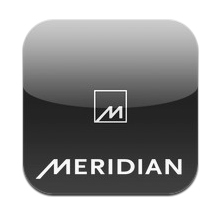 The app is free now at the Apple App Store, but you will need a Meridian Music Server to take advantage of it.
The app is free now at the Apple App Store, but you will need a Meridian Music Server to take advantage of it.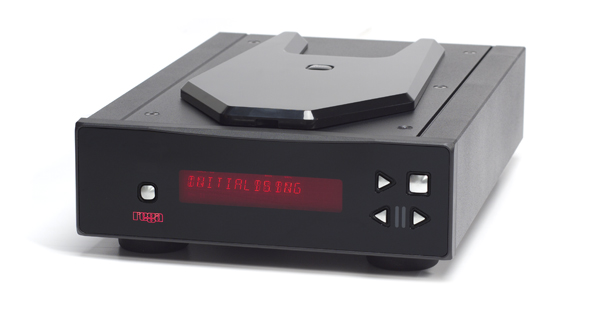 Rega’s Apollo-R smokes the dCS Paganini. Okay, it’s not that awesome, but I got your attention, no? In all seriousness, the Apollo-R is a damn fine CD player. Even as computer audio continues to be all the rage, many people still enjoy dropping a CD into a transport and pushing “Play.” Rega is one reason why they do.
Rega’s Apollo-R smokes the dCS Paganini. Okay, it’s not that awesome, but I got your attention, no? In all seriousness, the Apollo-R is a damn fine CD player. Even as computer audio continues to be all the rage, many people still enjoy dropping a CD into a transport and pushing “Play.” Rega is one reason why they do. In Service of the Music
In Service of the Music Tonality to Spare
Tonality to Spare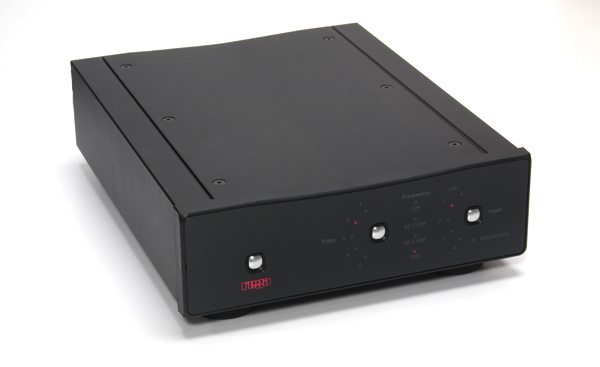 To DAC or Not to DAC
To DAC or Not to DAC Proof is in the Pudding
Proof is in the Pudding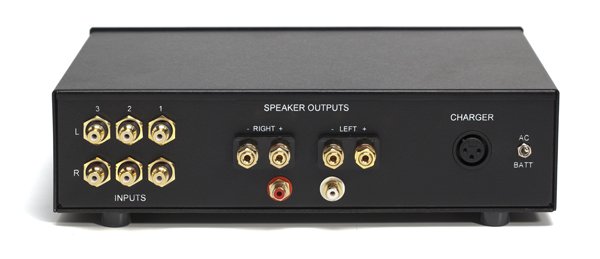 More of What You Need…And None of What You Don’t
More of What You Need…And None of What You Don’t Red Wine Audio Signature 15 Integrated Amplifier
Red Wine Audio Signature 15 Integrated Amplifier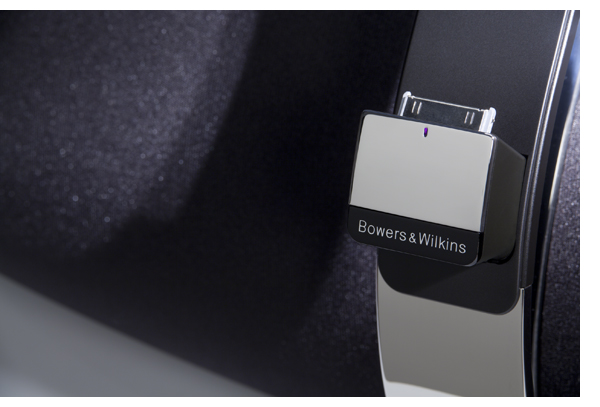
 While our original Zeppelin survived teenager torture for four years, everyone sighed a huge sigh of relief thanks to AirPlay, knowing there would be no more rough and tumble with the dock. The wireless connectivity also makes for a ton of fun when friends visit – now everyone can play their music through the Zeppelin Air.
While our original Zeppelin survived teenager torture for four years, everyone sighed a huge sigh of relief thanks to AirPlay, knowing there would be no more rough and tumble with the dock. The wireless connectivity also makes for a ton of fun when friends visit – now everyone can play their music through the Zeppelin Air. Horsepower without finesse is uninteresting (or perhaps a Dodge Viper) and again the Zeppelin Air glides through effortlessly. The piano solo on Bowie’s “Aladdin Sane” from the self titled album was brilliant and hung in the air well in front of the speakers possessing exceptional timbral accuracy. Whatever secrets lurk in the DSP processing, the engineers in charge should get a pay raise. If I only had $600 to spend on a system, I wouldn’t even bother with separates. Those in a compact space will find that the Zeppelin Air makes a great addition to your flat screen TV for a lot less than any number of soundbars now available.
Horsepower without finesse is uninteresting (or perhaps a Dodge Viper) and again the Zeppelin Air glides through effortlessly. The piano solo on Bowie’s “Aladdin Sane” from the self titled album was brilliant and hung in the air well in front of the speakers possessing exceptional timbral accuracy. Whatever secrets lurk in the DSP processing, the engineers in charge should get a pay raise. If I only had $600 to spend on a system, I wouldn’t even bother with separates. Those in a compact space will find that the Zeppelin Air makes a great addition to your flat screen TV for a lot less than any number of soundbars now available. The B&W Zeppelin Air
The B&W Zeppelin Air Techie Bits
Techie Bits
 However, most popular arms (Rega, TriPlanar, Dynavector, and others) can be accommodated with an adaptor plate available from AVID dealers. Comparison listening between the Diva II and II SP came courtesy of identical SME 309 tonearms, each fitted with Dynavector DV20x2L phono cartridges and Furutech ag12 tonearm cables. Feickert Analogue’s Adjust + software assured identical performance from both setups.
However, most popular arms (Rega, TriPlanar, Dynavector, and others) can be accommodated with an adaptor plate available from AVID dealers. Comparison listening between the Diva II and II SP came courtesy of identical SME 309 tonearms, each fitted with Dynavector DV20x2L phono cartridges and Furutech ag12 tonearm cables. Feickert Analogue’s Adjust + software assured identical performance from both setups. Speaking of Rammstein, both ‘tables are highly resistant to acoustic feedback when blasting “Ich tu dir weh” at high-volume levels. Yes, the AVID decks will satisfy hard-core metalheads in addition to everyone else, regardless of musical taste. This is not a feat aced by all turntables.
Speaking of Rammstein, both ‘tables are highly resistant to acoustic feedback when blasting “Ich tu dir weh” at high-volume levels. Yes, the AVID decks will satisfy hard-core metalheads in addition to everyone else, regardless of musical taste. This is not a feat aced by all turntables. While both ‘tables admirably function with some of my best recordings, the II SP’s higher resolution uncovers more treasure on mediocre, densely packed recordings. The II SP also offers a bigger performance gain when paired with a premium arm and cartridge. The gap isn’t as vast with a Rega RB 300 arm as it is with the SME 309 or Funk Firm FX•R arm. I concur with Mr. Mas, who feels like the ‘table and arm are critical to an analog playback system, and that one can achieve better overall performance with a great turntable/arm setup and modest cartridge than the other way around.
While both ‘tables admirably function with some of my best recordings, the II SP’s higher resolution uncovers more treasure on mediocre, densely packed recordings. The II SP also offers a bigger performance gain when paired with a premium arm and cartridge. The gap isn’t as vast with a Rega RB 300 arm as it is with the SME 309 or Funk Firm FX•R arm. I concur with Mr. Mas, who feels like the ‘table and arm are critical to an analog playback system, and that one can achieve better overall performance with a great turntable/arm setup and modest cartridge than the other way around.